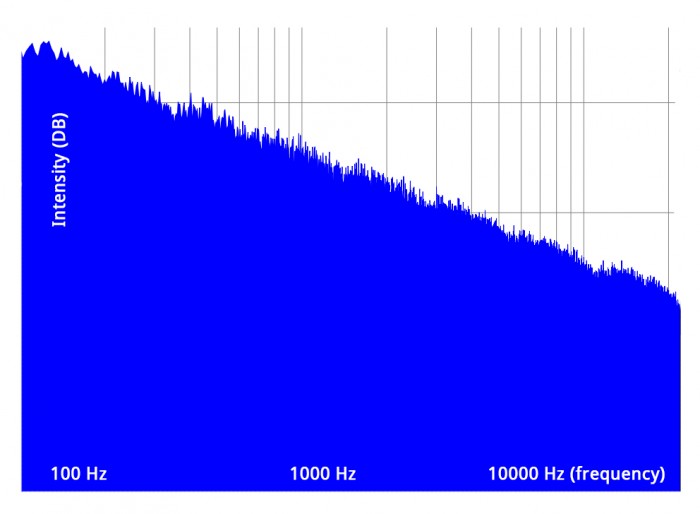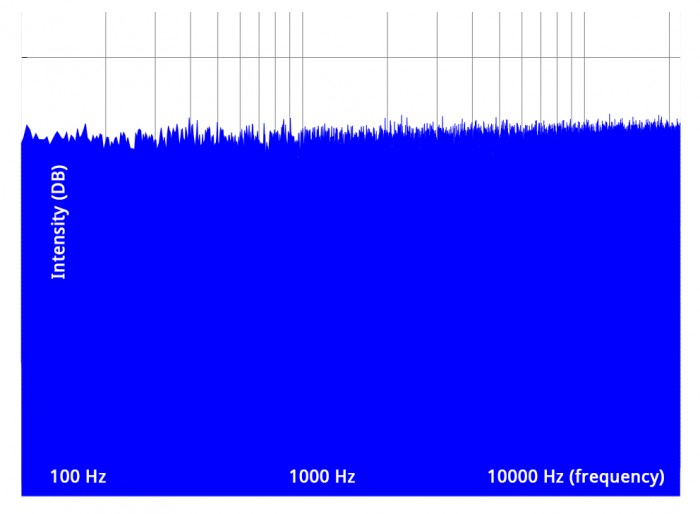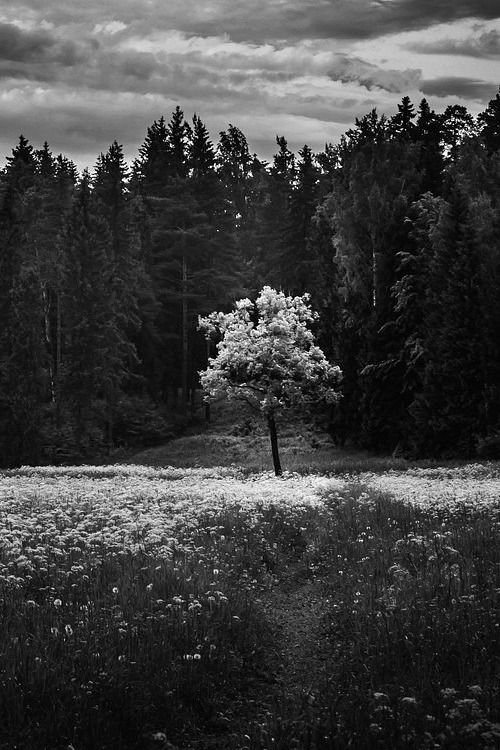In this world, there are several facts that are scientifically confirmed.
The state of cognitive rest is characterized by chaotic variability.
Chaotic variability has a pattern of pink noise.
Pink noise: oscillation amplitudes negatively correlate with their frequencies. The smaller the amplitude, the higher the frequency. The higher the amplitude, the lower the frequency. Everyday things happen more often than high-impact events. Generally, this is how it happens in life and that seems more or less natural.

An example from the body: most of the time the body is making small movements and sometimes there are occasional spikes of bigger movements. The more extreme is the movement, the rarer it occurs.
…
Why should that be interesting at all?
…
A similar pattern was noticed in mood shifts among those who are considered to be
normal or mentally healthy.
Normal and healthy = chaotic variability in movements and moods
with a certain regularity.
// patterns change but repeat themselves
Sometimes they experience
a) anxiety,
b) emotional excitability,
c) panic attacks.
But those are rare (as fuck).
The more intense the emotional disturbance, the rarer it occurs.
in normal, mentally healthy people.

…
When people are anxious,
they move differently.
Chaotic variability in movement is gone.
Instead, the period of white noise onsets.
White noise is when
amplitude
is not correlated
with frequency.
In other words, things small and big have a similar chance to occur. This is not really natural, although it happens in life. Nobody will argue with that.

Panic attacks occur at random intervals.
Their intensity is pretty predictable.
Sometimes it’s small,
sometimes it’s big,
most of the time
it’s just average.
Even worse, they may also occur regularly.
Regularity is a key word for anxiety.
One could call it a loop.
Normal healthy people also have a connection to regularity,
but it is not as strongly expressed in them.
Depressive people, in the contrary,
have shown to be
completely immersed in chaos.
Both in their mood variations,
and movements.
…
Taking another perspective.
Declaring variables.
N – normal mentally healthy state
P – panic attack, increased anxiety, excitement
D – depression, sadness, inactivity
Normal mentally healthy state variability in time:
NNNNPPDDNNNPPNNNPPNNDDNNNDDNNNNNPPDDNNNNNNPNNDDDDNNNPPPPPPNNN
(chaotic variability with circadian regularity of pattern re-occurrence)
Predominantly anxious emotionally excited state in time:
PNDPDNDNNDNDPDPDNDPDNDNDNDNDNPDDPDDNNNNNDPDNDNDNNDPDNDNPDNDNP
(random shifts between the opposites with circadian regularity – bipolar as the extreme)
Predominantly depressed, inactive state:
DDDDDDDDPPPPPNNNNNNNPDPDNDNDPDNDPDNNNNDPDNDNNDNDPDPPDNPDPDNDNP
(chaotic variability with no circadian regularity)
…
In other words,
if we get too connected
to the 24-hour rhythm
of the day
(our environment)
we are likely
to experience
panic attacks
and anxiety.
If, however, we inject
some chaos
into our lives
we get
stabilized
in relation to
our environment.
If the chaos
is too much
we may shift
into a sad state
lost between
possibilities
and
opportunities.
…
Same holds true
for the neurons
inside the brain.
The brain needs to be able
to segregate
and to aggregate.
Information.
Sensory inputs.
Its underlying near-chaotic dynamics
allows just that.
The brain’s near-chaotic dynamics
is determined by its
neuronal structure.
When neurons are synchronized,
all of them and for a short time,
rhythmical oscillation occurring randomly,
it’s a sign of
a mental disorder.
When they cannot synchronize altogether
at all
it’s a sign of
mental depression.
However, when they can synchronize
in many different constellations,
implying a mix of chaos,
and regularity,
(circadian rhythm)
we’re dealing with a healthy behavior.
…
Body movements
are connected to
chaotic mood variability
connected to
neuronal waves’
near-chaotic dynamics
with an element of
circadian regularity
in it.
…
One last thing to say.
Creative states
have shown to be linked to
mental disorders.
(In a study of 300000 Swedes).
It’s not surprising
that those, who are are
considered to be
crazy
find their refuge
in art.
Craziness is a form of resistance.
It’s interesting, however,
that those creative states
are characterized by
similar deviations
in neural dynamics,
in body movement patterns,
in mood variability,
as mental disorders
are known for.
…
It’s a call for
More circadian regularity,
as well as
More chaotic variability
within our lives.
Shifting
from one state,
to another,
staying…
moving on…
zooming in…
zooming in…
zooming in…
zooming in…
zooming out…
being excited,
being super excited,
staying excited,
landing…
landing..
landing..
landed.
Stable.
Stable.
Stable.
Focused.
Super focused.
Full of attention.
Clear sense of direction.
Strong intention.
Lots of power.
Strength.
Determination.
Success.
Failure.
Success.
Success.
Success.
Failure.
Insistence.
More insistence.
Pleasure.
Lots of pleasure.
Physical pleasure.
Love.
Falling in love.
Falling in love.
Loving.
(It’s difficult to speak about love like this…)
(Changing the subject…)
Music.
Weather.
Whatever.
Stable again.
A bit sad.
sadder.
Very sad.
Very sad.
Understanding the way things are.
Even more sad.
Asking yourself questions.
Not getting any answers,
relaxed, though…
chilling…
it’s ok…
it’s ok…
it’s ok..
it’s ok..
ok…
ok.
ok.
ok?
ok.
what’s next
how is it changing
what’s next
what is in there
And like this every day with small deviations along the way.
